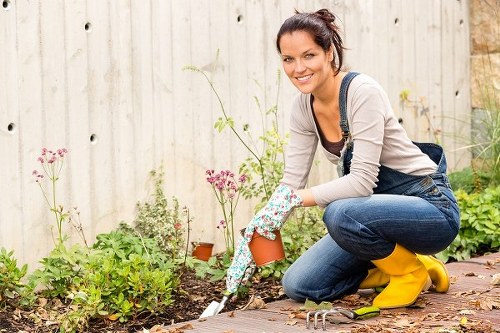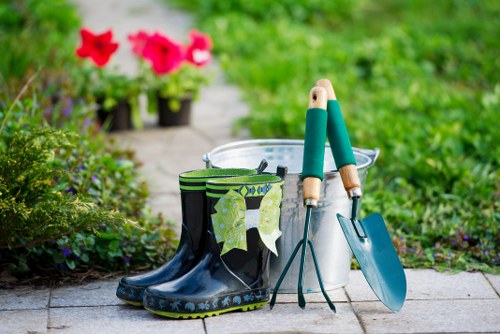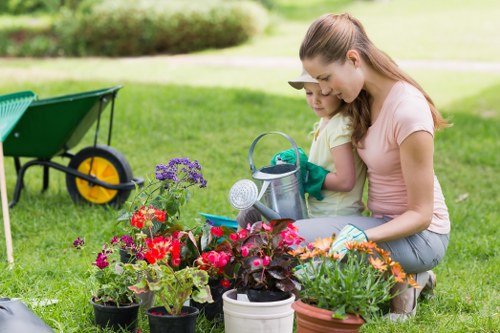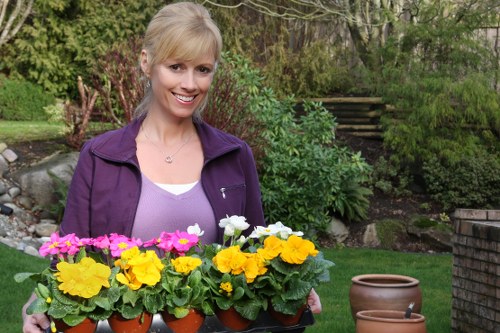Comprehensive Guide to Garden Maintenance in Wanstead

Maintaining a beautiful garden in Wanstead requires a blend of passion, knowledge, and consistent effort. Whether you're a seasoned gardener or a novice, understanding the specific needs of your garden can transform your outdoor space into a vibrant and thriving oasis.
Wanstead, known for its picturesque landscapes and diverse flora, offers gardeners a unique environment to cultivate a variety of plants. However, the success of your garden largely depends on effective maintenance practices tailored to the local climate and soil conditions.
In this guide, we'll explore essential garden maintenance tips, seasonal tasks, and expert advice to help you achieve a stunning garden in Wanstead all year round.
Understanding Wanstead's Climate and Soil

The foundation of successful garden maintenance lies in understanding the specific climate and soil characteristics of Wanstead. The region experiences a temperate climate with mild winters and warm summers, providing an ideal environment for a wide range of plants.
The soil in Wanstead varies, but it is generally well-drained with a mix of clay and loam. Testing your soil's pH and nutrient levels can help you make informed decisions about plant selection and fertilization.
By tailoring your garden maintenance practices to Wanstead's unique conditions, you can ensure healthy plant growth and vibrant blooms throughout the year.
Seasonal Garden Maintenance Tasks

Spring Maintenance
- Pruning: Remove dead or damaged branches to encourage new growth.
- Planting: Sow seeds and plant new shrubs or perennials.
- Weeding: Clear out weeds to reduce competition for nutrients.
Summer Maintenance
- Watering: Ensure plants receive adequate moisture, especially during dry spells.
- Mulching: Apply mulch to retain soil moisture and suppress weeds.
- Pest Control: Monitor for pests and apply natural or chemical treatments as needed.
Autumn Maintenance
- Leaf Removal: Clean up fallen leaves to prevent fungal diseases.
- Planting Bulbs: Plant spring-flowering bulbs for early blooms.
- Soil Preparation: Add compost to enrich the soil for the next growing season.
Winter Maintenance
- Pruning: Trim trees and shrubs to maintain shape and health.
- Protecting Plants: Use covers or mulches to shield sensitive plants from frost.
- Planning: Plan your garden for the upcoming year, considering new plants and layouts.
Essential Tools for Garden Maintenance

Having the right tools is crucial for efficient garden maintenance. Here are some must-have tools for gardeners in Wanstead:
- Pruning Shears: Ideal for trimming branches and shaping plants.
- Garden Fork: Useful for aerating soil and turning compost.
- Watering Can/Hose: Essential for keeping plants hydrated.
- Weeder: Helps in removing stubborn weeds without disturbing plant roots.
- Gloves: Protect your hands from thorns, dirt, and potential irritants.
Investing in quality tools can make garden maintenance tasks easier and more enjoyable, ensuring your garden remains in top condition.
Plant Selection and Care

Choosing the Right Plants
Selecting plants that thrive in Wanstead's climate is vital for a successful garden. Consider factors such as sunlight exposure, soil type, and water requirements when choosing plants. Popular choices include:
- Roses: Known for their beauty and fragrance.
- Lavender: Adds color and repels pests.
- Hostas: Perfect for shaded areas.
- Hydrangeas: Offer vibrant summer blooms.
- Boxwood: Ideal for hedges and topiary.
Plant Care Tips
Proper care ensures your plants remain healthy and bloom beautifully:
- Regular Watering: Maintain consistent moisture levels.
- Fertilization: Feed plants with appropriate fertilizers to promote growth.
- Deadheading: Remove spent flowers to encourage new blooms.
- Pest Management: Keep an eye out for pests and diseases, addressing issues promptly.
- Staking: Support tall or delicate plants to prevent breakage.
Landscape Design Ideas for Wanstead Gardens
Creating a Focal Point
Establishing a focal point can enhance the visual appeal of your garden. Consider features like a stunning tree, a decorative fountain, or a vibrant flower bed to draw attention.
Incorporating Pathways
Pathways not only add structure but also make navigating your garden easier. Use materials like gravel, stone, or brick to create inviting walkways.
Adding Seating Areas
Designate spaces for relaxation with benches, garden chairs, or a gazebo. These areas provide a peaceful retreat to enjoy your garden.
Using Vertical Space
Maximize space by incorporating vertical elements such as trellises, pergolas, or hanging planters. These features add depth and interest to your garden.
Eco-Friendly Garden Maintenance Practices
Adopting sustainable practices can benefit both your garden and the environment:
- Composting: Recycle organic waste to create nutrient-rich compost for your soil.
- Rainwater Harvesting: Collect rainwater for irrigation to conserve water resources.
- Native Plants: Choose native species that require less water and are more resistant to local pests.
- Natural Pest Control: Use biological controls like beneficial insects instead of chemical pesticides.
- Mulching: Reduce water evaporation and suppress weeds with organic mulches.
Implementing these eco-friendly practices can lead to a healthier garden and a more sustainable lifestyle.
Hiring Professional Garden Maintenance Services
While DIY garden maintenance is rewarding, sometimes professional assistance can make a significant difference. Hiring experts in Wanstead can ensure your garden receives the care it needs:
- Expertise: Professionals have the knowledge and skills to address specific garden challenges.
- Time-Saving: Save time by outsourcing maintenance tasks to dedicated specialists.
- Customized Services: Tailor services to meet the unique needs of your garden.
- Equipment: Access to specialized tools and equipment for efficient maintenance.
- Ongoing Support: Receive continuous care and advice to keep your garden thriving.
If you're looking to elevate your garden maintenance, consider reaching out to local Wanstead professionals who can provide personalized and comprehensive services.
Common Garden Maintenance Challenges in Wanstead
Pest Infestations
Pests like aphids, slugs, and snails can damage your plants. Regular monitoring and adopting natural pest control methods can help manage infestations effectively.
Disease Management
Fungal diseases such as powdery mildew and blight can affect plant health. Ensuring proper air circulation, adequate spacing, and timely treatment can prevent and control diseases.
Weed Control
Weeds compete with desirable plants for nutrients and water. Regular weeding and mulching can keep weed growth in check.
Watering Issues
Overwatering or underwatering can stress plants. Implementing efficient irrigation systems and monitoring soil moisture levels can maintain optimal hydration.
Soil Degradation
Continuous cultivation without replenishing nutrients can degrade soil quality. Adding compost and organic matter enhances soil fertility and structure.
Tips for Sustainable Garden Maintenance
Sustainability in garden maintenance not only benefits the environment but also ensures the long-term health of your garden:
- Use Organic Fertilizers: Opt for natural fertilizers to avoid chemical runoff.
- Implement Crop Rotation: Rotate plant species to maintain soil health and reduce pest buildup.
- Reduce Lawn Areas: Replace parts of your lawn with native plants or ground covers to save water and support biodiversity.
- Install Efficient Irrigation: Use drip irrigation or soaker hoses to minimize water waste.
- Recycle Garden Waste: Compost plant debris to create valuable soil amendments.
Incorporating these sustainable practices can lead to a more resilient and eco-friendly garden.
Maximizing Garden Aesthetics
Color Coordination
Choosing plants with complementary colors can create a visually appealing garden. Consider the color wheel when selecting flowers and foliage to achieve harmony.
Texture and Form
Incorporate a variety of textures and plant forms to add depth and interest. Mix soft, delicate blooms with bold, structural plants for a dynamic look.
Lighting
Proper lighting enhances the beauty of your garden at night. Use garden lights to highlight key features and create ambiance.
Water Features
Adding elements like fountains, ponds, or birdbaths can introduce movement and attract wildlife to your garden.
Maintaining Garden Tools
Well-maintained tools ensure efficiency and longevity. Here are some tips to keep your garden tools in top condition:
- Clean After Use: Remove dirt and debris to prevent rust and damage.
- Sharpen Blades: Regularly sharpen blades of pruners, shears, and other cutting tools for clean cuts.
- Store Properly: Keep tools in a dry, sheltered area to protect them from the elements.
- Inspect for Damage: Check for any signs of wear or damage and repair or replace as necessary.
- Lubricate Moving Parts: Apply oil to hinges and joints to ensure smooth operation.
Proper tool maintenance not only extends the life of your equipment but also makes garden maintenance tasks easier and more effective.
Creating a Maintenance Schedule
Organizing your garden maintenance tasks with a schedule can help ensure nothing is overlooked. Here's a suggested monthly maintenance plan:
- January: Plan garden layout and order seeds.
- February: Prepare soil and prune dormant trees.
- March: Start planting early vegetables and perennials.
- April: Mulch beds and plant summer flowers.
- May: Set up irrigation systems and fertilize plants.
- June: Monitor for pests and manage weeds.
- July: Harvest vegetables and deadhead flowers.
- August: Continue harvesting and maintain watering schedules.
- September: Plant autumn bulbs and prepare for cooler weather.
- October: Rake leaves and mulch garden beds.
- November: Protect sensitive plants and clear out garden debris.
- December: Review garden performance and plan for next year.
A structured maintenance schedule keeps your garden organized and ensures consistent care throughout the year.
Enhancing Garden Biodiversity
A biodiverse garden supports a healthy ecosystem and attracts beneficial wildlife:
- Plant Variety: Incorporate a mix of flowers, shrubs, and trees to provide habitats for different species.
- Pollinator-Friendly Plants: Grow plants that attract bees, butterflies, and other pollinators.
- Wildlife Habitats: Create shelters like birdhouses, bat boxes, and insect hotels.
- Native Species: Use native plants to support local wildlife and reduce maintenance needs.
- Avoid Pesticides: Limit the use of chemicals to protect beneficial insects and animals.
Fostering biodiversity not only enhances the beauty of your garden but also promotes environmental sustainability.
Conclusion
Effective garden maintenance in Wanstead involves understanding the local climate, selecting appropriate plants, and implementing consistent care practices. By following the tips and strategies outlined in this guide, you can cultivate a thriving and beautiful garden that enhances your outdoor living space.
Whether you're undertaking the tasks yourself or hiring professional services, dedication and knowledge are key to successful garden maintenance.
Contact us today to learn more about our garden maintenance services in Wanstead and transform your garden into the oasis you've always dreamed of.
